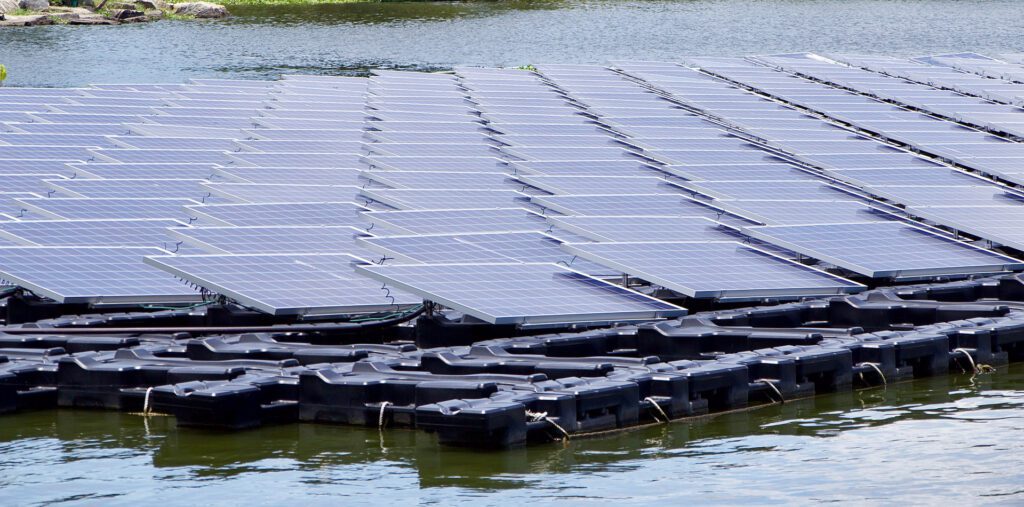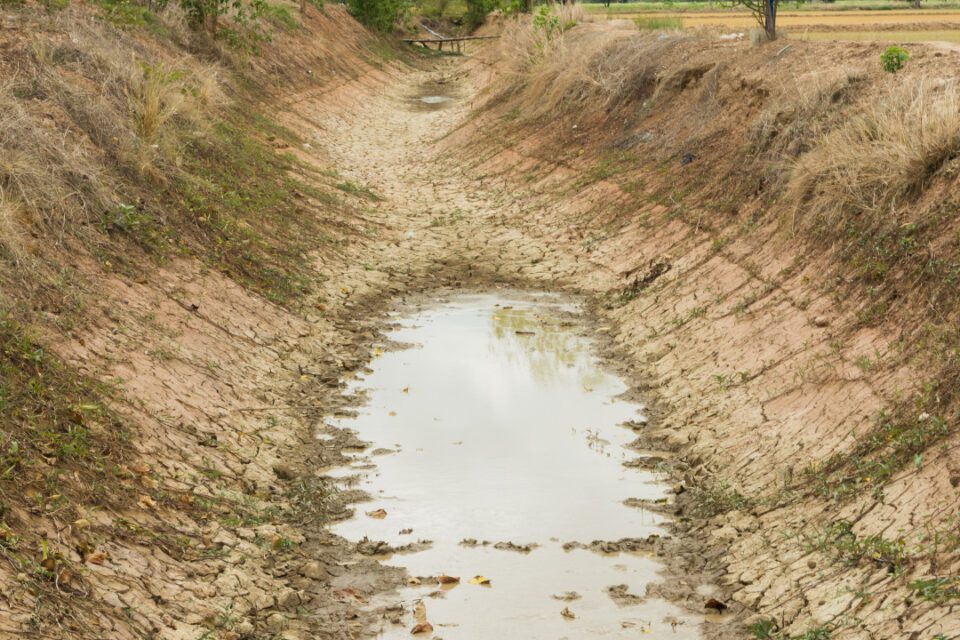In a previous blog post, I developed a set of guidelines for water resources management and discussed the first six items on the list. This post will cover the second batch: items 7 to 12.
Guidelines for Water Resources Management
- Slowdown the flow of water
- Make maximum use of rainfall
- Focus on increasing water productivity in the agricultural sector
- Use groundwater—in the agricultural sector—in the first place to improve the productivity of rainfall (and surface water resources)
- Prioritize the environment over agriculture
- Create redundancies (thus, do not optimize)
- Emphasize small-scale decentralized solutions
- Create beneficial assemblies
- Encourage nature-based solutions
- Make the polluter pay
- Do not forget solutions for water problems that are outside the water sector
- Reduce the role of the cost-benefit analysis
Emphasize small-scale decentralized solutions
Rainfall is the dominant hydrological input in most landscapes. It is usually subject to considerable spatial variability. Local conditions—such as land cover, slope, soil permeability, local geology, etc.—also determine the rainfall-runoff response. The same applies to groundwater recharge and storage capacity. Moreover, water issues are site specific and diverse and water resources are best used in their immediate vicinity. Hence from a water resources perspective, small-scale solutions tailored to local conditions are preferred in most landscapes.
Use small & slow solutions (permaculture design principle 9; Andrew Millison)
Small-scale decentralized solutions are also effective from an institutional point of view. They are associated with empowering communities and local government, building a level of trust, making better use of local knowledge, more equitable use of the water resources, and more effective governance. The advantages of decentralized management—provided one follows the subsidiarity principle—include less complexity, less coordination and transaction costs, quicker response, and better coordination with local stakeholders. It is generally cheaper than centralized management. This is important given the limited resources—in terms of staff, budget, law enforcement, etc.—available for water resources management in most countries.
Yet another advantage is that an incremental approach can be adopted for implementing small-scale solutions. This makes funding the proposed interventions much easier.
Lastly, small-scale decentralized solutions are associated with more diversity, more options, and more redundancy. These features strengthen resilience to cope with uncertainties and disturbances and adapt to a changing climate (and other new realities).
It is evident that small-scale decentralized solutions need to fit in an overarching framework for water resources management at basin scale. In addition, some interventions—such as bulk water abstraction for large scale irrigation or management of very large aquifers—will require more centralized management. Nevertheless, local solutions with local management carry many advantages and should be given preference whenever possible.
Subsidiarity principle: social and political issues should be dealt with at the most immediate (or local) level that is consistent with their resolution; note that water resources management—which decides “who gets what and when”—is an inherently political and social process.
Create beneficial assemblies
Integrate rather than segregate (permaculture design principle 8; Andrew Millison)
Interventions of all scales and types are best clustered in beneficial assemblies to increase system output and strengthen resilience. A beneficial assembly is a group of elements that are positioned with the explicit objective to gain benefits from their connections. Hence “the whole becomes greater than the sum of its parts”.
Once you look for them, beneficial assemblies are everywhere. Nature is full of them, and it is probably one of the reasons why cities exist. A very simple example is the (small) swimming pool that is part of the (small) housing complex where I live. Only because this small pool is situated within the compound does it have value and is it maintained. At the same time, it adds lots of value to our community. It is the connection—swimming pool located within a housing complex—that has created this value and ensures that both elements (the housing complex and small pool) thrive and are sustained.
Relationships develop by putting the right elements (hard & soft) in the right place. Each serves the needs and accepts the product of the other element. It creates symbiosis and strengthens the resilience (and value) of the ensemble.
Beneficial assemblies are rarely on the radar screen of water managers. On the contrary. The bulk of interventions in the water sector are implemented in isolation as stand-alone projects. It reflects the prevailing silo approach in the water-agri-environmental domain. Therefore, it is often expensive to maintain water infrastructure and there are plenty of examples of failed infrastructure (or water software) elements.
An example of a beneficial assembly in the water sector is a small reservoir in the upper catchment equipped with a low-head turbine—in a pumped-storage setup—and an array of solar panels or windmill. The hydropower component serves to balance variable renewable energy sources and produces valuable ‘firm’ energy. The assembly’s total value will further increase if the reservoir becomes an integral part of a local rewilding effort that develops eco-tourism in the area. The web of benefits aims to sustain the entire ensemble. It, therefore, indirectly provides for other essential reservoir functions—that are difficult to monetize—such as flood attenuation and maintaining instream flow requirements in the downstream river reaches.

Encourage nature-based solutions
Betting against nature is foolish. It is too powerful and persistent. A better strategy, therefore, is to devise a setup where ‘nature does the work’.
Nature-based solutions employ natural processes to achieve water-related objectives. They capitalize on the close relation between water management and land management. Nature based solutions are wide-ranging and divers but, in essence, are about management of vegetation, soils, wetlands, and floodplains, with the aim to capture rainfall and slow-down the speed at which water flows through the landscape. Water quality is improved along the way through biological processes.
Because nature-based solutions employ living processes, they are cheap—which is important in an environment where there are never enough funds for water resources management—and resilient. In fact, nature-based solutions are regenerative and self-sustained provided they are not over-exploited. Further, by creating functioning eco-systems they carry multiple other benefits, such as enhancing nutrient and moisture availability, preventing soil erosion, assisting in pest control, storing carbon, and can even be grazed. And they are maintenance free.
A common misconception is that nature-based solutions in the agricultural sector are ‘backward looking’. In fact, by combining (traditional) regenerative farming practices with modern science and technology, the approach is thoroughly advanced and much better suited to meet the inevitable climate challenge.
If we throw mother nature out the window, she comes back in the door with a pitchfork (Masanobu Fukuoka)
Make the polluter pay
The Polluter Pays Principle is: “those who produce pollution should be held accountable for its harm to human health and the environment” (US Advocate for the public interest).
In water resources management I would change this principle to “those who produce pollution clean it up”. Whenever this is difficult—for instance irrigated agriculture where return flows contain excessive ag-chemicals—a pollution tax can be applied.
The benefits of this guideline are manifold and self-understood. It creates an incentive to adapt manufacturing processes or farming practices to use less pollutants (which, in the long term, may improve the economic viability of the enterprise). It will reduce both non-point source and point-source pollution and results in cleaner water. It reduces the external costs of unsafe or unusable water that are now borne by society. It sets a standard. Hence this principle generally encounters broad public support.
Implementing this guideline, however, requires a solid regulatory framework in combination with field monitoring and law enforcement. If a polluter can—as an ultimate step—not be taken to court, this guideline is nothing more than a good intention rather than an effective policy.
Do not forget solutions for water problems that are outside the water sector
Solutions outside the water sector can be very effective to address water problems.
For instance, reducing food waste will make a huge impact on water scarcity concerns, as agriculture is by far the dominant water user and more than 30% of food is lost in the chain from harvest to consumption. Flood mitigation can be achieved by land restoration and encouraging agricultural practices that capture rainfall and encourage soil moisture storage and groundwater recharge. The single most effective measure to increase water productivity in agriculture—and thus address water scarcity—is often to provide financial incentives by increasing farmgate prices. After all, when the financial conditions are favorable, farmers will find a way to increase the productivity of the limited volumes of water at their disposal.
Hence, water managers should be aware that many water problems are best addressed by people and institutions outside their sector. It widens the pallet of available options. In addition, by broadening the solution space, the potential for a meaningful compromise on intractable water issues is enlarged.

Reduce the role of the cost-benefit analysis
Investments in water infrastructure (hard & soft) are commonly subjected to a Cost-Benefit Analysis (CBA). I think this is not an appropriate instrument for most interventions in the water sector. While there are several reasons for this—which I have discussed in a previous post—my main objections to the CBA are that it does not consider beneficial assemblies (see above) and underestimates the lifespan of a well-designed public infrastructure element. Further, the CBA ignores the value of ‘redundancy’ in a more extreme climate.
- When it becomes part of a beneficial assembly—as often happens over time with a well-designed public infrastructure element that performs an essential function—the accumulated value of the ensemble increases, sometimes exponentially. It is difficult to predict which connections will develop, as this concerns an ‘emergent property’. The CBA does not consider the potential assembly and its value, and therefore (vastly) underestimates the benefits of the investment.
- Water infrastructure that performs an essential function typically outlasts its intended lifetime—often by a long time; it means that the benefits extend much further in the future than the costs, and that the accumulated benefits are (much) higher than originally foreseen.
- The benefits associated with water security in an unpredictable climate are extremely high. One of the strategies to achieve water security is to create redundancies, such as extra water storage. A CBA is unable to quantify the value of these redundancies, specifically if they accrue to beneficiaries that are unrelated to the infrastructure element under consideration.
Hence, rather than relying on a CBA, investment decisions in the water sector are best evaluated, in my view, by plain common sense and following Bill Mollison’s advice that “the elements we design should last as long as possible and take least maintenance”.
Bonus: some quotes
Some quotes I came across while writing this post (source unfortunately lost).
The key challenge at local scale is often to conserve the available water resources rather than equitable management
In a rural environment in a developing country, maximize the use of labor and minimize the use of machinery
A large variety of ecosystem services cannot be quantified economically
Landscape rehydration at catchment scale is a social process
REFERENCES
Biggs, R. et al; Principles for Building Resilience, Sustainable Ecosystem Services in Social-Ecological Systems; Cambridge University Press 2015
Christian Brannstrom, Decentralizing Water Resources Management in Brazil, 2004
SIWI, Manual 1, Principles and Practices of Integrated Water Resources Management, 2020
